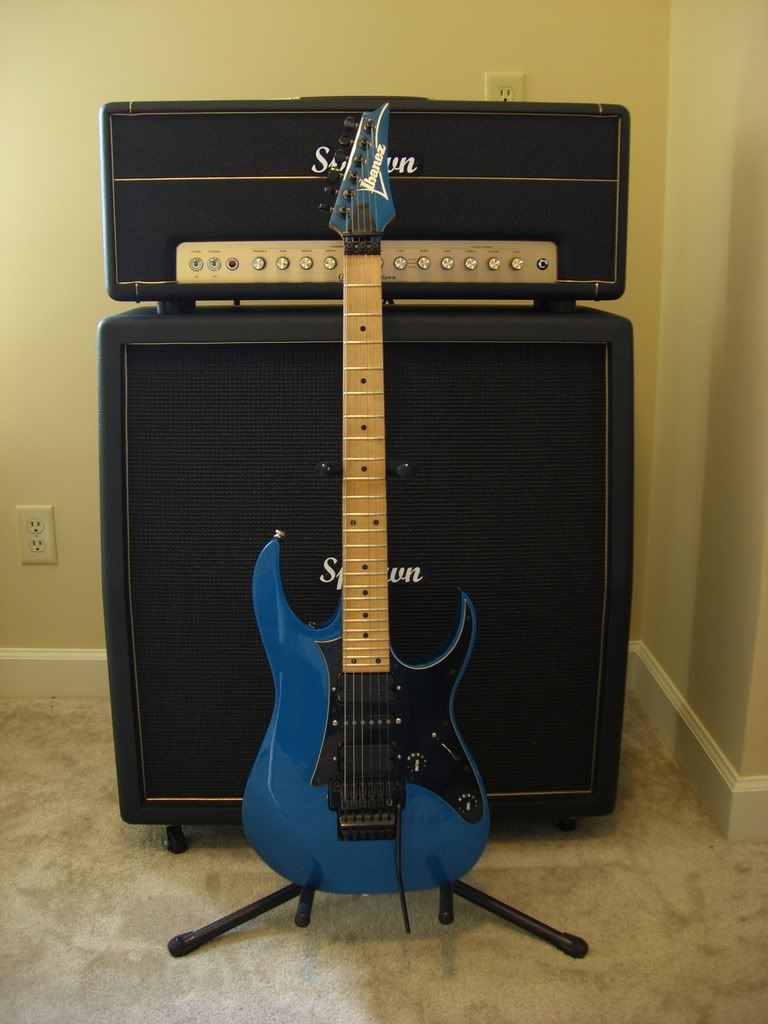However, the guitar also needed a bunch of other minor operations for me to get it exactly the way I wanted, so this ended up being a sizeable project.
 My first order of business was the neck. The Ernie Ball necks have always felt great to me, and I learned that they use a special combination of Birchwood Casey Tru-Oil and Gun Stock Wax to achieve that superior, worn-in feel. After some research, I felt pretty comfortable with performing the operation. First, I sanded down the neck to its bare state using a variety of sandpaper grits (600, 400, 200). Following that, I used Murphy's Oil Soap (diluted 3:1) to give the neck a thorough cleaning from its built-up grime and sweat. The next night, I applied the the coat of Tru-Oil with a paper towel and old T-shirt, distributing it evenly down the neck. A lot of this stuff goes a long way, so I only used a small amount. It also becomes extremely gooey within a matter of minutes, so I let the oil sit on the neck for about thirty seconds, wiping the excess off immediately afterwards. Then, the neck was left to dry overnight. The next day, I buffed the neck with some fine 0000 steel wool and then applied a coat of the wax. With the wax, I simply poured a little on the neck and rubbed it across the neck until its surface was covered. I opted to apply one more coat, but this is merely a personal preference as to how "sticky" you want your neck. The result is the one of the best feeling necks I've ever played. If you've ever played an Ernie Ball guitar before, you'll know what I mean.
My first order of business was the neck. The Ernie Ball necks have always felt great to me, and I learned that they use a special combination of Birchwood Casey Tru-Oil and Gun Stock Wax to achieve that superior, worn-in feel. After some research, I felt pretty comfortable with performing the operation. First, I sanded down the neck to its bare state using a variety of sandpaper grits (600, 400, 200). Following that, I used Murphy's Oil Soap (diluted 3:1) to give the neck a thorough cleaning from its built-up grime and sweat. The next night, I applied the the coat of Tru-Oil with a paper towel and old T-shirt, distributing it evenly down the neck. A lot of this stuff goes a long way, so I only used a small amount. It also becomes extremely gooey within a matter of minutes, so I let the oil sit on the neck for about thirty seconds, wiping the excess off immediately afterwards. Then, the neck was left to dry overnight. The next day, I buffed the neck with some fine 0000 steel wool and then applied a coat of the wax. With the wax, I simply poured a little on the neck and rubbed it across the neck until its surface was covered. I opted to apply one more coat, but this is merely a personal preference as to how "sticky" you want your neck. The result is the one of the best feeling necks I've ever played. If you've ever played an Ernie Ball guitar before, you'll know what I mean.With the neck having been perfected, I moved on to the trem cavity. Most of these Ibanezes came with some sort of foam in the trem cavity, yet for some reason, mine was missing. I went to my local Hobby Lobby and picked up the perfect material to solve the problem: a $.79 sheet of adhesive-backed "Funky Foam." I traced the cavity area on a sheet of paper and used it as template to cut the foam. After cutting the appropriate shape out, I placed it in the cavity and glued it down with some Gorilla Glue for extra-security. Voila, instant trem cavity foam!

Next came the pickups. As mentioned, I went with the DiMarzio PAF Pro for the bridge, another PAF Pro for the neck, and the DiMarzio ISCV2 JEM singe coil for the middle. Using some handy schematics from DiMarzio's site, installation was a breeze. If you are a beginner, Magnus Olsson's pickup installation guide is very helpful and informative (not to mention the guy is an extremely gifted player!). Of note, I used CTS 500k potentiometers, a Sprague .022μf "Orange Drop" capacitor for the tone control, and a Switchcraft 5-way switch. The PAF Pros still retain that classic, humbucking vibe, yet they are just hot enough to handle heavier material. They have fast become my favorite pickup.


Finally, I installed one of those handy Gotoh allen wrench holders that you attach to the back of the headstock using my drill. This tool is invaluable whenever you forget or misplace your Allen wrenches, especially at a gig situation.







1 comment:
Hi,
Great article.
I've just picked myself up an Original issue RG550 in Laser Blue (average condition) as a restore project.
Great to see there are others out there loving this wonderful model too!
Haku
kinutakoen@gmail.com
Post a Comment